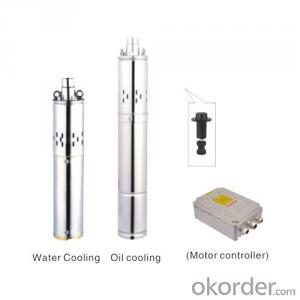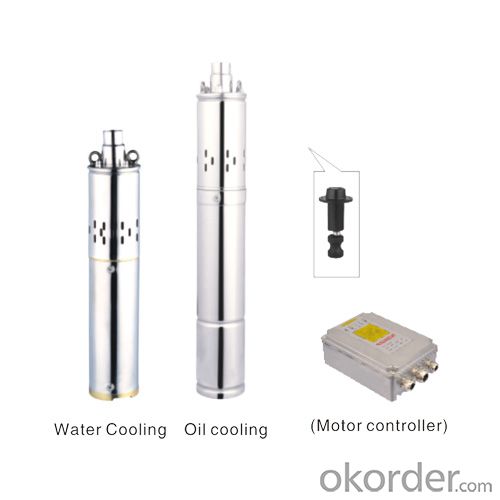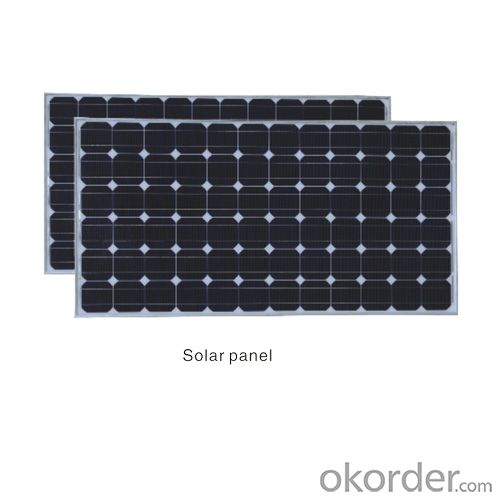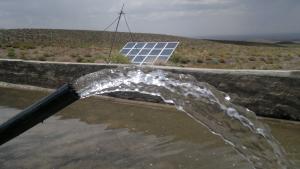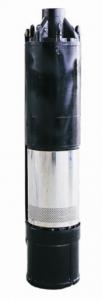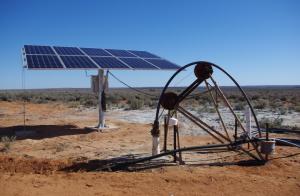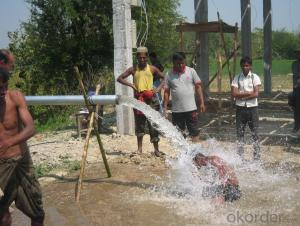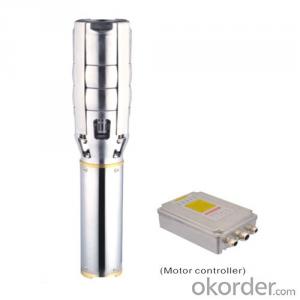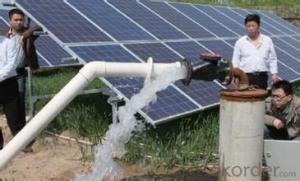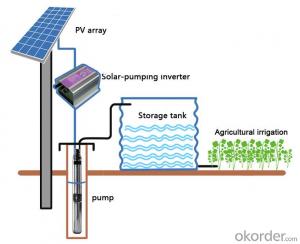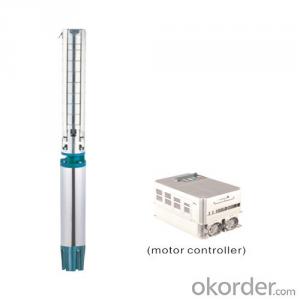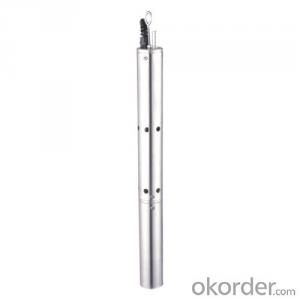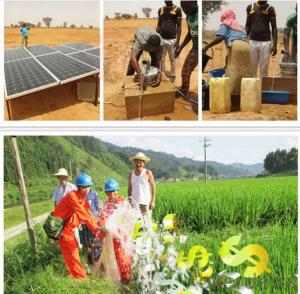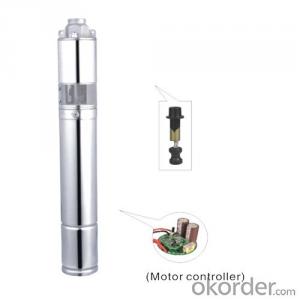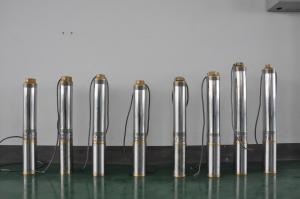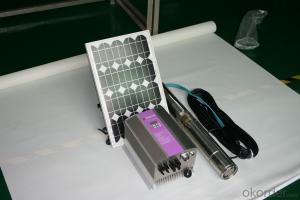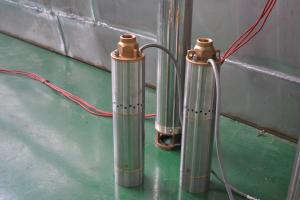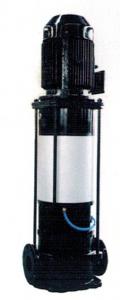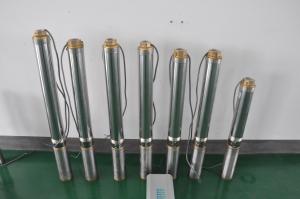Garden Fountain Solar Pump 4sps Easy Install Well Pumps with CE Certification
- Loading Port:
- Ningbo
- Payment Terms:
- TT OR LC
- Min Order Qty:
- 10 unit
- Supply Capability:
- 100000 unit/month
OKorder Service Pledge
OKorder Financial Service
You Might Also Like
Specifications
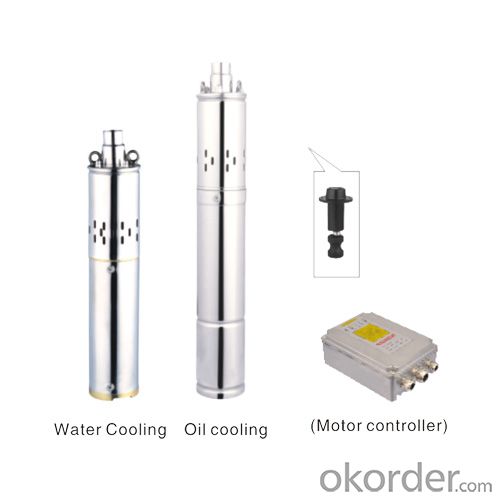
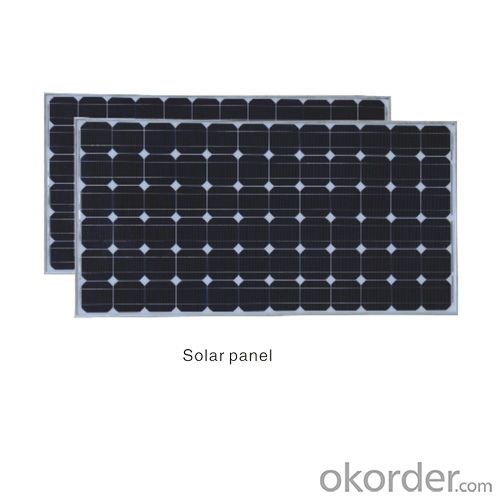
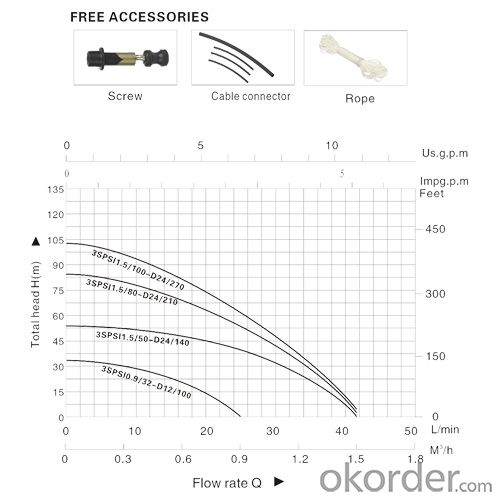
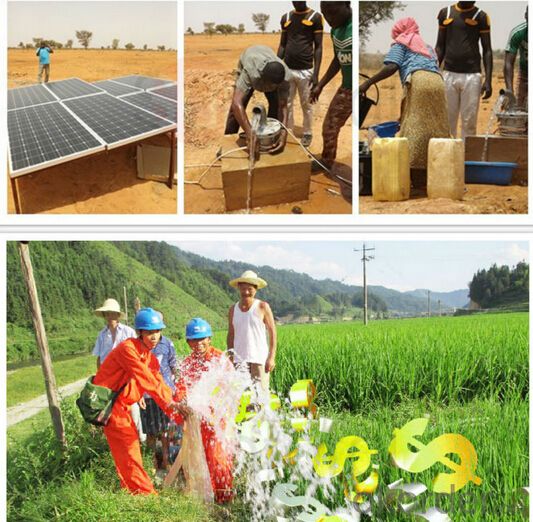
•Profile:
Adopt stainless steel screw and rubber stator, permanent Magnet Brushless motor. With combination of motor and controller, the max efficiency is over 85%, raises 25% than the traditional AC one.
•Material:
1)Stainless steel casing, shaft core, coupling and pump body; copper alloy connecting, base; rubber stator of high-strength and wear-resistant.
2)Water immersion style stainless steel submersible motor; graphite bearings.
•Product Feature:
1)Compact structure, high-lift, noiseless, pollution-free; complete electrical protecting controller device, against under-voltage, over-voltage, over-flow, overload, waterless etc; automatic recovery; controlling water height as demand.
2)Easy installation, maintenance-free, safe and reliable.
Water depth: 1 -150m Max flow: 4.2m3/h
•Application:
1) These electric pumps series are workable with in maximum head, as there are no restrictions of BDC. With the addition of high head, high efficiency and wide high efficiency zone, they are suitable for distance water irrigation, high efficiency of increasing oxygen on aquaculture, pumping water from deep well, gardening, fountain and etc.
•Working condition:
1)Non-corrosive water; the volume ratio of sand content no more than 1%o particle size less than 0.2mm.
2)Max medium temperature up to +40t); PH value remains 6.5-8.5.
3)Work close to the rated head and must be immersed in water.
.Motor Data
MODEL | Voltage | Power | Max.head (m) | Max.flow (mVh) | OUTLET | GW | Dimension |
4SPS2.5/50-D24/270 | 18-36 | 180-360 | 50 | 2.5 | G1.2 5" | 95 | 100 |
4SPS3/60-D36/500 | 24-48 | 300-700 | 60 | 3 | G1. 2 5" | 10 | 100 |
4SPS3.6/80-D48/750 | 36-72 | 450-1000 | 80 | 3.6 | G1.2 5" | 10.3 | 100 |
4SPS4/1 00-D72/1 000 | 48-96 | 600-1300 | 100 | 4 | G 1. 2 5" | 10.5 | 100 |
4SPS3/1 20-D72/1 000 | 48-96 | 600-1300 | 120 | 3 | G1. 2 5" | 11 | 100 |
Product Description
Product Feature
Solar submersible pumps is the efficient equipment to extract groundwater in applications of agricultural irrigation, human and livestock water in plateau and mountain areas, etc.
1. Motor and shell made of stainless steel
2. Stainless steel shaft and coupling
3. High strength & wear resistance stainless steel impeller and diversion shell
4. Sand resistance, anti-rust, pollution-free, long life time
5. Small size, light and easy to ship
6. Easy installation and easy maintain
7. High efficient smart controller with multiple protections: over-temperature protection,
short-current protection, over-load and under-voltage protection. Safe and reliable to use.
Price includes pump with controller. Solar PV panels may be purchased separately.
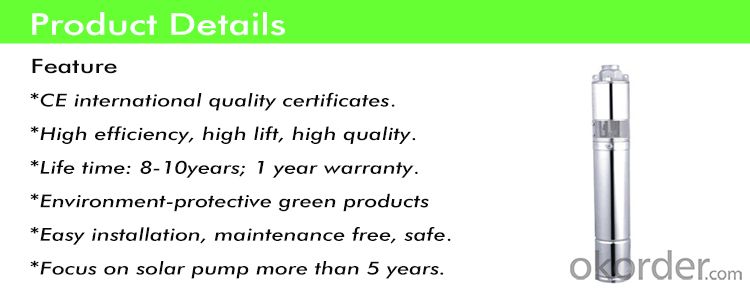
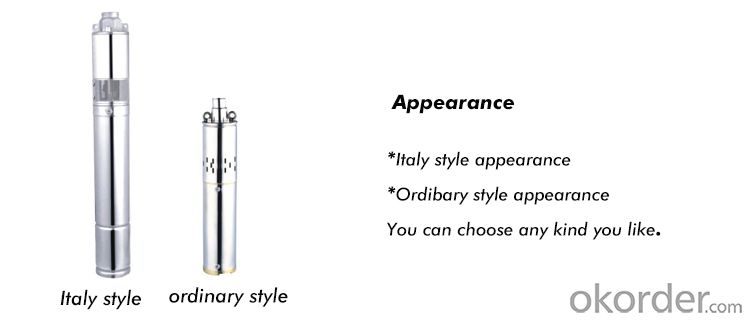





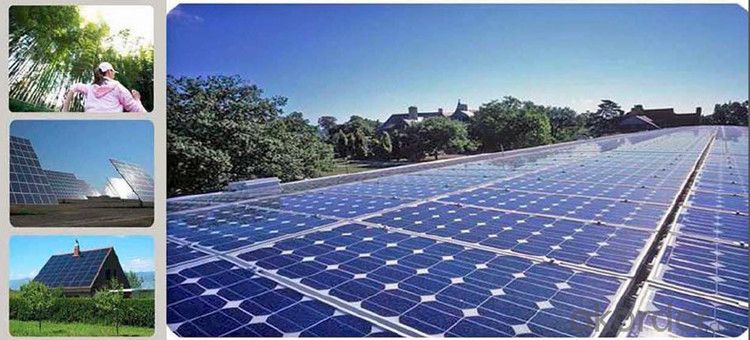
CNBMSOLAR is a world-leading and Vertical integrated manufacturer of high-performance with Silicon, Wafer, Cells,
Modules, which convert sunlight into electricity for residential, commercial, and utility-scale power generation.
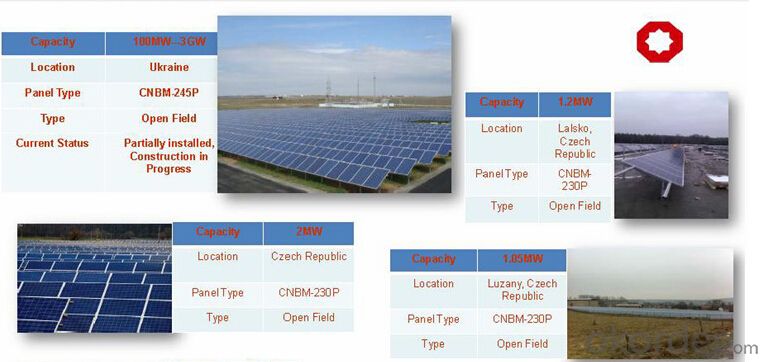
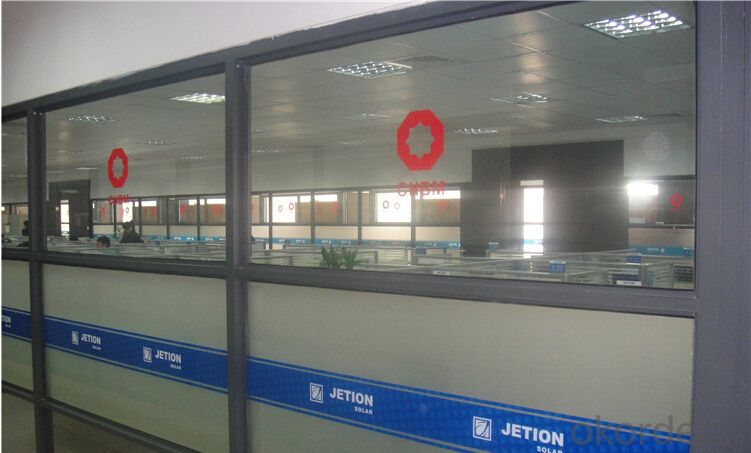
FAQ
Q1. When can I get the quotation?
We usually quote within 24 hours after we get your inquiry. If you are urgent to get the price, please send the message on trade manager or call us directly.
Q2. Can I buy one as sample?
Yes, of course. MOQ of solar pump is 1 piece. For the other kind of products (water pump, air compressor and welding machine), you need to pay all the fee when we make the sample.
Q3. Can you make OEM?
Yes, you can put your logo and brand on the box.
Q4. What is your main market?
Eastern Europe, Southeast Asia. Mid East, South America, Northern Europe.
- Q: How does the size of the water storage tank affect the performance of a solar pump system?
- The size of the water storage tank can significantly affect the performance of a solar pump system. The primary purpose of a water storage tank in a solar pump system is to store the water that is being pumped by the solar pump during the day, so it can be used during periods when there is no sunlight or when the pump is not operational. One of the key factors impacted by the size of the water storage tank is the availability of water during non-sunlight hours or when the pump is not operational. A larger water storage tank will have a higher capacity to store water, ensuring a continuous supply even during periods of low or no sunlight. This is particularly important in areas with inconsistent sunlight or where the pump needs to operate during the night. Furthermore, the size of the storage tank also affects the overall efficiency of the system. A larger storage tank allows for more water to be stored, reducing the frequency of pump operation. This can lead to energy savings and prolong the lifespan of the pump as it experiences less wear and tear. Moreover, the size of the water storage tank can also impact the system's ability to meet peak water demands. If the storage tank is too small, it may not be able to store enough water to meet high demand periods, resulting in a temporary water shortage. On the other hand, a larger storage tank can accommodate higher water demands, ensuring an uninterrupted water supply during peak usage. It is important to choose the appropriate size of the water storage tank based on factors such as the water requirements, availability of sunlight, and the frequency of pump operation. A careful assessment of these factors will help determine the optimal size of the storage tank to maximize the performance and efficiency of the solar pump system.
- Q: Can a solar pump be used in areas with low water table?
- Yes, a solar pump can be used in areas with low water tables. However, it is important to note that the efficiency of the pump may be affected in such areas. A low water table means that the distance between the ground surface and the water source is greater, requiring the pump to work harder to extract water. Additionally, the amount of water that can be pumped may be limited in areas with low water tables.
- Q: How does the efficiency of a solar pump compare to a traditional electric pump?
- The efficiency of a solar pump is generally higher compared to a traditional electric pump. Solar pumps are designed to convert solar energy into mechanical energy, eliminating the need for grid electricity. They utilize sunlight, which is a renewable and abundant energy source, to power the pump. Traditional electric pumps, on the other hand, rely on fossil fuel-generated electricity from the grid, which can be subject to price fluctuations and availability issues. Solar pumps have lower operational costs and a longer lifespan, making them more cost-effective in the long run. Additionally, solar pumps have a smaller carbon footprint, as they do not produce greenhouse gas emissions during operation. Overall, the efficiency of a solar pump surpasses that of a traditional electric pump in terms of energy consumption, environmental impact, and cost-effectiveness.
- Q: What is the lifespan of a solar panel used in a solar pump system?
- The duration of a solar panel's life in a solar pump system may differ based on multiple factors, including the panel's quality, maintenance methods, and environmental circumstances. Typically, a solar panel of excellent quality and proper maintenance can endure for approximately 25 to 30 years. Nevertheless, it's crucial to acknowledge that the panel's effectiveness may gradually diminish, resulting in a slight reduction in output. Consistent cleaning, monitoring, and maintenance can assist in optimizing the solar panel's lifespan and performance within a solar pump system.
- Q: How does the cost of a solar pump compare to a traditional electric pump?
- The cost of a solar pump compared to a traditional electric pump can vary depending on several factors. Initially, the upfront cost of a solar pump is typically higher than that of a traditional electric pump. Solar pumps require additional components such as solar panels, inverters, and batteries, which contribute to their higher initial cost. However, it is important to consider the long-term savings and benefits of a solar pump. Solar pumps operate using renewable energy from the sun, eliminating the need for electricity from the grid, which can result in significant savings on electricity bills. Additionally, solar pumps have lower maintenance costs compared to electric pumps since they have fewer moving parts, reducing the need for regular repairs and replacements. The cost of electricity is also a crucial factor to consider. In areas with high electricity costs, the savings generated by a solar pump over time can offset the initial investment. Furthermore, solar pumps can be more cost-effective in remote or off-grid locations where extending electrical lines can be expensive and impractical. Government incentives and subsidies can also affect the cost comparison. Many countries and regions offer financial incentives, grants, or tax credits for adopting solar technology, which can offset the initial cost and make solar pumps more economical in the long run. In summary, while the upfront cost of a solar pump may be higher than a traditional electric pump, the long-term savings on electricity bills, lower maintenance costs, and potential government incentives can make solar pumps a more cost-effective and environmentally friendly option.
- Q: How do solar pumps handle water with low pH or chemical contamination?
- Solar pumps generally do not have specific mechanisms to handle water with low pH or chemical contamination. However, the materials used in the construction of solar pumps are often corrosion-resistant, which helps mitigate the effects of low pH or chemical contamination. Additionally, in cases of severe chemical contamination or low pH, pre-treatment methods such as filtration or chemical neutralization may be required before the water is pumped using a solar pump.
- Q: How do you choose the right size of solar pump for your needs?
- When choosing the right size of solar pump for your needs, it is important to consider factors such as the water flow rate required, the depth of the water source, the distance the water needs to be pumped, and the power output of the solar panels. By evaluating these factors and consulting with a professional, you can determine the appropriate size of solar pump that will efficiently meet your specific water pumping requirements.
- Q: How does a solar pump handle debris in the water source?
- A solar pump typically uses a filter or a strainer to prevent debris from entering the pump and clogging it. This helps maintain the efficiency and longevity of the pump while ensuring that the water source remains clean.
- Q: Can a solar pump be used in areas with high wind conditions?
- Yes, a solar pump can be used in areas with high wind conditions. However, it is important to consider the stability and durability of the installation to ensure that the pump remains secure and functional in such conditions. Additionally, proper design and anchoring techniques should be implemented to minimize any potential damage caused by the strong winds.
- Q: Can a solar pump be used in areas with strict emissions regulations?
- Yes, a solar pump can be used in areas with strict emissions regulations. Solar pumps operate using renewable energy from the sun, which is a clean and emission-free source of power. As a result, they do not produce any harmful emissions or pollutants that could violate the regulations in place. This makes solar pumps an environmentally friendly and compliant solution for pumping needs in areas with strict emissions regulations.
Send your message to us
Garden Fountain Solar Pump 4sps Easy Install Well Pumps with CE Certification
- Loading Port:
- Ningbo
- Payment Terms:
- TT OR LC
- Min Order Qty:
- 10 unit
- Supply Capability:
- 100000 unit/month
OKorder Service Pledge
OKorder Financial Service
Similar products
Hot products
Hot Searches
Related keywords
